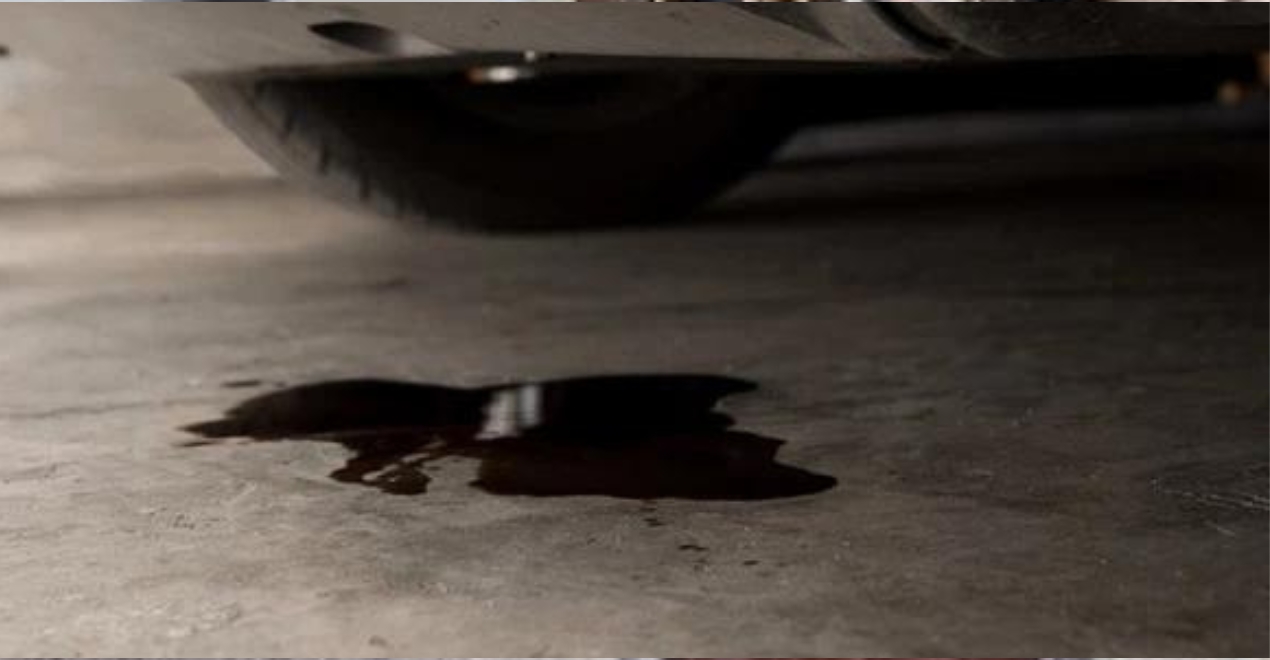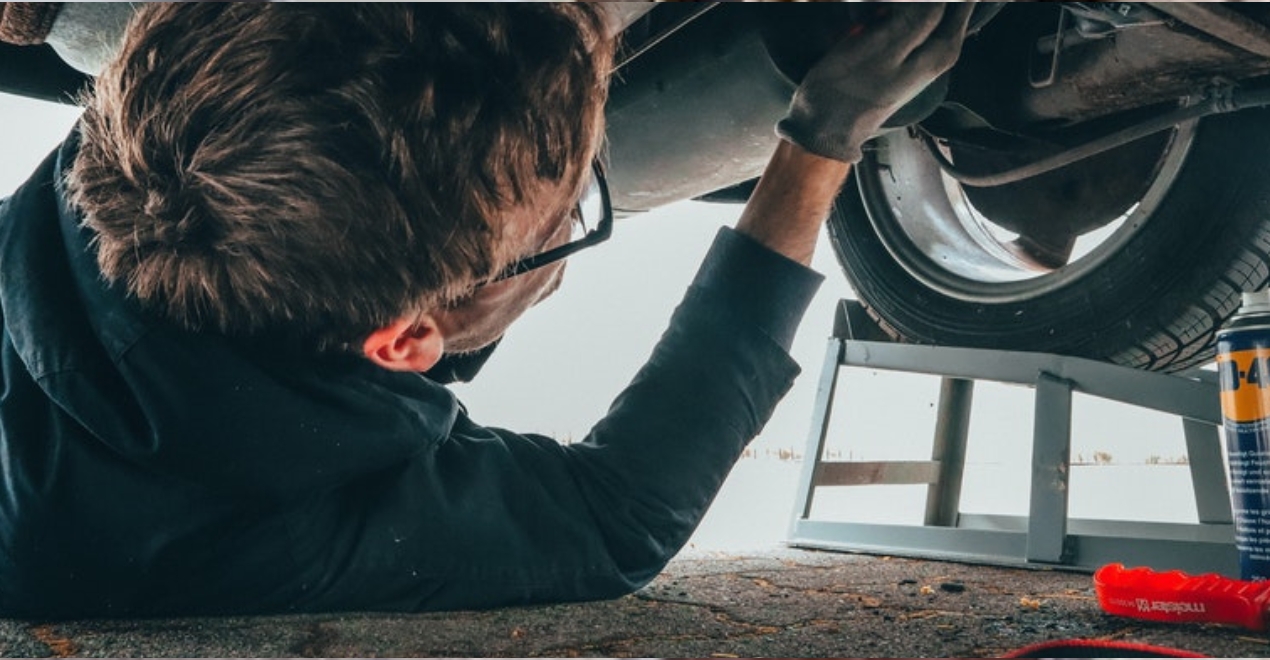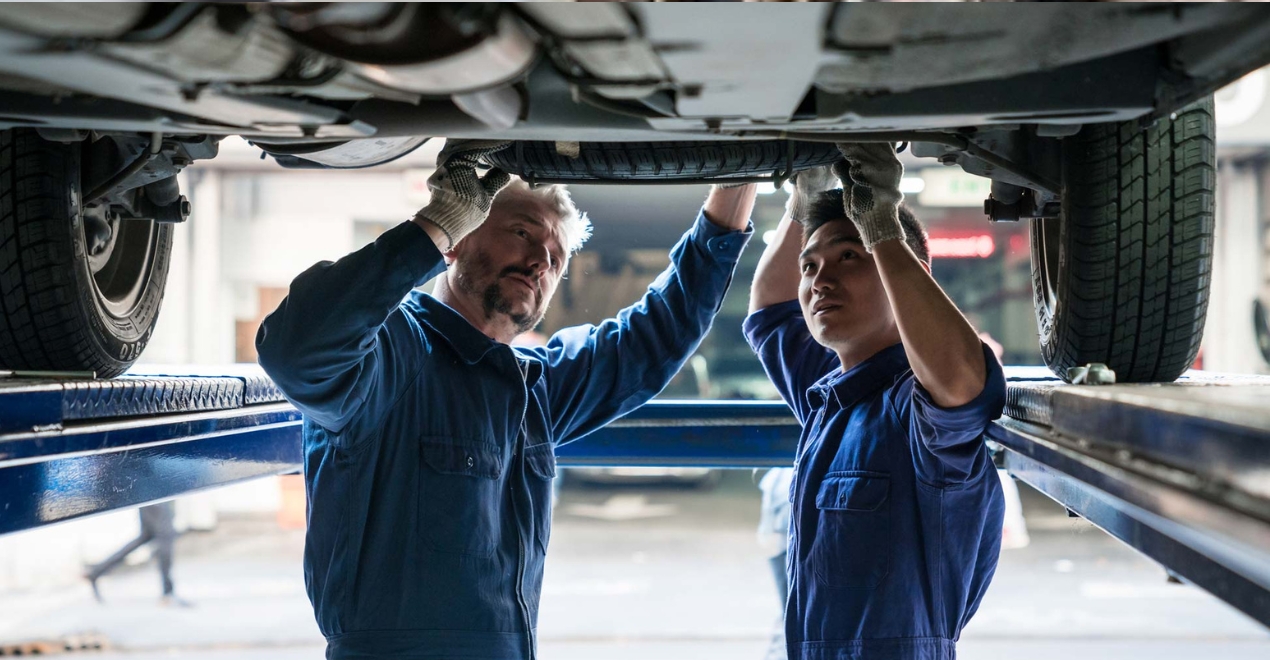Water leakage from the bottom of your car can be a worrisome issue that, if left unaddressed, can lead to significant damage to your vehicle’s components. While a water leak from your car might seem like a minor inconvenience at first, it can escalate into serious problems affecting your car’s functionality and safety. Here’s a detailed guide on how to identify, address, and prevent a water leak from the bottom of your car. Facing water leak issues under your car? Contact Crossroads Helpline today for expert assistance right at your doorstep!
Table of Contents
ToggleIdentifying the Source of Water Leak from Car

Before attempting to fix a water leak, it’s crucial to accurately identify the source. Water leaks can originate from various parts of your vehicle, and pinpointing the exact location can save you time and money. Here are some steps to help you identify the source:
- Visual Inspection: Begin by visually inspecting the underside of your car. Look for any signs of moisture, rust, or wet spots. Check the undercarriage, the floor mats inside the car, and around the doors and windows.
- Check the Cooling System: One of the common sources of water leakage is the cooling system. Inspect the radiator, hoses, and water pump for any signs of leaks. Coolant leaks can often be mistaken for water leaks, so ensure you differentiate between the two by checking the color of the fluid.
- Air Conditioning System: The air conditioning system can also cause water to drip from your car, especially when it’s running. This is usually normal, but excessive leakage might indicate a problem with the drain tube.
- Examine the Sunroof and Windows: If your car has a sunroof, check the drainage channels for blockages. Similarly, inspect the window seals for any gaps or cracks that could be letting water in.
- Windshield and Door Seals: Over time, the seals around your windshield and doors can degrade, allowing water to seep in. Inspect these areas carefully and look for any signs of wear and tear.
- Visit a Professional: If you’re unable to identify the source of the leak on your own, consider taking your car to a professional mechanic. They have the tools and expertise to diagnose the issue accurately.
Fixing Common Water Leak from Car

Once you’ve identified the source of the water leak, you can proceed with the appropriate fix. Here are some common causes of water leakage and how to address them:
Cooling System Leaks
If the leak is coming from the cooling system, it’s essential to act quickly to prevent engine damage. Here’s how to fix it:
- Replace Damaged Hoses: Over time, radiator hoses can crack and leak. Inspect all hoses and replace any that show signs of wear.
- Fix the Radiator: If the radiator itself is leaking, you might need to replace it. Some minor leaks can be temporarily fixed with a radiator sealant, but this is not a long-term solution.
- Check the Water Pump: The water pump is a critical component of the cooling system. If it’s leaking, you’ll need to replace it promptly.
Air Conditioning System Leaks
Water dripping from the air conditioning system is usually due to condensation. However, if the leak is excessive, you might need to:
- Clear the Drain Tube: The AC system has a drain tube that can get clogged. Locate the drain tube and ensure it’s clear of any obstructions.
- Inspect the Evaporator Core: A leaking evaporator core can cause water to accumulate inside the car. If this is the case, you’ll need to have it repaired or replaced by a professional.
Sunroof and Window Seals
Water can enter through poorly sealed sunroofs and windows. Here’s how to fix these leaks:
- Clean the Drain Channels: Sunroofs have drain channels that can become blocked with debris. Use a flexible wire or compressed air to clear any blockages.
- Replace Weatherstripping: If the weatherstripping around your windows or sunroof is damaged, replace it to ensure a proper seal.
- Apply Sealant: For minor leaks, you can apply a silicone-based sealant around the edges of the sunroof or windows to prevent water from entering.
Preventing Future Water Leaks

Preventing water leaks is easier than dealing with the consequences. Regular maintenance and timely repairs can help keep your car dry and functional. Here are some preventive measures:
- Regular Inspections: Conduct regular inspections of your car’s undercarriage, cooling system, and seals. Look for signs of wear and address any issues promptly.
- Keep Drain Channels Clear: Ensure that all drain channels, especially around the sunroof and AC system, are clear of debris.
- Replace Old Seals: Over time, seals around your windows, doors, and sunroof will degrade. Replace them periodically to maintain a watertight seal.
- Use a Car Cover: If you park your car outdoors, using a car cover can protect it from rain and snow, reducing the risk of water leaks.
- Avoid Driving Through Deep Water: Driving through deep water can cause water to enter your car’s interior and damage the undercarriage. Avoid such situations whenever possible.
Professional Help and Advanced Solutions
While some water leaks can be fixed at home, others might require professional intervention. If you’re dealing with a persistent leak or if the source is difficult to identify, it’s best to seek professional help. Here’s what to expect from a professional service:
- Diagnostic Testing: A professional mechanic will use advanced diagnostic tools to pinpoint the exact source of the leak.
- Comprehensive Repairs: Professionals have the expertise to handle complex repairs, such as replacing the evaporator core or repairing the heater core, which might be beyond the scope of a DIY fix.
- Warranty and Assurance: Professional repairs often come with a warranty, giving you peace of mind that the issue will be resolved correctly.
The Importance of Timely Repairs
Ignoring water leaks can lead to severe consequences, including:
- Electrical Damage: Water can damage the electrical components in your car, leading to malfunctioning lights, sensors, and other critical systems.
- Rust and Corrosion: Prolonged exposure to moisture can cause rust and corrosion, weakening the structural integrity of your vehicle.
- Mold and Mildew: Water accumulation inside the car can lead to mold and mildew growth, causing unpleasant odors and potential health hazards.
Addressing water leaks promptly not only preserves the condition of your car but also ensures your safety on the road.
DIY vs. Professional Repairs
Deciding whether to tackle the repair yourself or seek professional help depends on the complexity of the leak and your comfort level with automotive repairs. Here are some considerations:
- DIY Repairs: Suitable for minor leaks, such as replacing weatherstripping or clearing drain channels. Ensure you have the necessary tools and follow proper safety precautions.
- Professional Repairs: Recommended for complex issues, such as radiator or evaporator core leaks. Professionals have the expertise and equipment to handle intricate repairs safely and effectively.
Conclusion
A water leak from your car is a problem that should not be ignored. By identifying the source, addressing the issue promptly, and taking preventive measures, you can protect your vehicle from potential damage and ensure it remains in good working condition. Regular maintenance, vigilant inspections, and timely repairs are key to preventing a water leak from your car and maintaining its longevity. Whether you choose to tackle the repairs yourself or seek professional help, addressing water leaks early on is crucial for the safety and reliability of your vehicle.

